- Home
- Joyce Carol Oates
The Man Without a Shadow Page 21
The Man Without a Shadow Read online
Page 21
Once, in a weak moment with Milton Ferris, when Margot was feeling emotional, and Ferris was feeling protective and paternal, Margot confided in the older scientist that she sometimes worried that there was something fundamentally immoral in what they were doing—experimenting upon a brain-damaged human being who could have no clear sense of what was happening to him, and whose “consent” was questionable.
“Even, at times, it worries me—it makes me anxious—about animal research. Primates have such—personalities . . . If you get to know them.”
“Dear Margot. Don’t get to know them.”
Her white-bearded satyr-lover kissed her mouth, laughing somewhat crudely. If there is such a thing as a bemused and condescending kiss, that was it.
Yet, Margot recalls the kiss with a pang of happiness.
How simple life was to her then. She was Milton Ferris’s brilliant and promising young colleague, and had not yet taken his place.
She is oversensitive, her colleagues tell her. And she is overprotective of E.H.
(Some of them laugh at her behind her back, she knows. Even her young colleagues, lab assistants, and dissertation advisees. Others smile to her face.)
The fact is, Professor Sharpe is fiercely principled, unyielding. As she grows older, and renowned in the rapidly-growing field of memory research, she becomes less tolerant of others’ limitations. She is furious at others’ ambition which is invariably “crude”—“shameless”—ambition. In the way of her mentor Milton Ferris she speaks contemptuously of “lazy science”—“bad science”—“quasi-science.” In her department she is one of three top-earning professors; she is lavished with grants, for every research foundation wants to fund memory/brain-damage research and the mysterious “E.H.” is the most famous of amnesiac subjects. Margot Sharpe publishes articles in prominent journals as frequently as Milton Ferris once did. She has become noted for her astute, fair-minded, incisive reviews, that draw upon a history of psychology; she is at once a working scientist, and a historian of neuropsychology. In a citation for an award from the American Association of Experimental Psychologists it is said of Margot Sharpe that she exhibits, in reviews as well as articles, a “breathtaking knowledge of the literature of the field, where most scientists are but dimly aware of the history of their (professions).”
She has become, in middle age, something of a legendary figure herself: perennially youthful, even girlish in appearance and manner; with glossy-black hair falling straight to her shoulders or elegantly gathered at the nape of her neck, straight-cut bangs to her eyebrows. No matter that her hair is threaded with silver, or that there are pale creases at the corners of her eyes, Margot Sharpe dresses like a schoolgirl-ballerina in tight black jersey tops and jackets, black trousers or leggings, flat black shoes. She is disarming, disingenuous. She is quick, agile, graceful on her feet—lithe as a dancer. (Is she a dancer? it is wondered.) At professional gatherings, she is immediately recognizable; she has heard awed whispers in her wake—That’s Margot Sharpe. God, she looks young!
In her early forties Margot has accumulated an elite circle of former students who have achieved tenure and reputations in their competitive field and who constitute a third generation of sorts, their grandparent the Nobel laureate Milton Ferris and their parent Margot Sharpe. If required, Margot is as protective of her young as any actual parent might be.
She is unfailingly protective of E.H. Just to suggest an experiment that might “upset” her subject is to risk Margot Sharpe’s ire. She is credited with having said, wittily: “Eli Hoopes is the only gentleman in neuroscience.”
It is also said that, of ten proposals from colleagues to work with E.H., Margot Sharpe rejects, on the average, ten.
Notorious as Margot is for rejecting virtually all proposals from colleagues outside her department, she has been more diplomatic with her university colleagues. These proposals, from research scientists like Professor Karl Peirce, a neurophysiologist with a particular interest in the hippocampus and the amygdala, parts of the brain it has long been assumed were damaged by E.H.’s encephalitis, Margot can’t reasonably reject; her strategy is to postpone making a decision, and then to postpone meeting with the researcher, and then to postpone, as long as possible, the researcher’s meeting with the subject.
“Margot Sharpe doesn’t own E.H., for Christ’s sake! She isn’t his guardian.”
Her (senior, male) colleagues murmur together. They complain of her both in jest and bitterly.
Indirectly she knows of the collective dislike of Margot Sharpe, commingled with grudging admiration for her work and for her tenacity. What do they say, in derision? Sharpe is married to her work—she’s his wife.
SO VERY TIRED! A hole has been bored into his skull, a piece of bone has been removed like a jigsaw puzzle-piece, and the delicate dura has been pierced. Can’t recall why this terrible surgery was performed on his brain but knows it is irreversible.
A man’s brain has been touched by strangers. Lights have been shined into the recesses of his soul. He has been turned inside out like a rubber glove, and tossed aside.
Shuts his eyes tight. The girl’s body has only just been discovered—his cousin Gretchen. (But you must never say her name again, aloud. No one must hear.) He’d been hiding beneath the plank porch where he’d crawled to escape their eyes. And now his father staring at him with a look of commingled shame and contempt.
You saw nothing, Eli. You’ve been dreaming.
Go back to bed, son. There is nothing here for you.
“Mr. Hoopes? Are you feeling strong enough to get up? If you could swing your legs around here . . .”
He is being helped to his feet. He has been strapped flat on his back inside a sleek metal coffin and now he is being helped to his feet.
His knees are weak, his head feels as if air has been pumped into it—ever more air, ever more pressure.
Don’t look. You didn’t see.
There is nothing to see.
MARGOT NEVER THINKS, when she is apart from Elihu Hoopes, of how utterly lonely she is in her life, and alone.
It is fierce, such loneliness. A freezing wind, a very dry wind, that sucks at the marrow of the bone. Yet, enveloped in the busyness of her life, like one propelled along an endless stretch of white-water rapids, Margot rarely realizes it. When she is interviewed she will say in her bright happy voice The life of a scientist is a continual adventure. Continual discoveries. Even our failures are adventures.
She will say Do I regret not having a personal life?—laughing happily she will say But this is my personal life! My career, my work, my science, my life.
STUBBORNLY HE CONTINUES to believe that he is thirty-seven years old.
Though seeing in the mirror—(for how can he not?)—a much older man.
“How do you account for that, Mr. Hoopes?”
“‘Account for’—what?”
“The face in the mirror is not the face of a thirty-seven-year-old man—do you think?”
Margot Sharpe is not asking these questions. She is overseeing the interview of the amnesiac subject E.H. by one of her young colleagues. She would not phrase the questions quite so bluntly as the young man is doing but she does not interfere; it is a principle of Margot Sharpe’s not to criticize her younger colleagues and associates (to their faces) quite so readily as Milton Ferris had done.
In the end, many had resented Milton Ferris. The great man is the one who is resented for his very greatness.
Margot Sharpe thinks of herself as a good, perhaps a very good, but not a great scientist. Hers is the modesty of resignation: she does not compete with greatness. She has been very lucky in having inherited the “gold mine”—(to use Alvin Kaplan’s expression)—E.H. Her only hope is that greatness will in some way envelop her, and protect her.
Reluctantly E.H. is peering into a mirror. It is not really a natural thing to do—to scrutinize one’s own face before witnesses. If done, it is likely to be in utter privacy, as a most intimate
act.
Margot thinks, with sympathy—He doesn’t look at his face if he can avoid it. It is no longer “his” face.
With an air of bravado E.H. addresses the young professor: “What’s the problem, Doctor? That’s my ‘reflection’—not that it is exactly me.”
“You see your face as familiar, then—there is no surprise to you, seeing your face.”
This is very awkwardly phrased. It is neither a question nor a statement. Yet Margot does not interfere, just yet.
The young man says, “You see your reflection as familiar, then? Though in some way, as you say, it isn’t ‘exactly you.’”
“Is your reflection ‘you,’ Doctor?”
The young man is caught off guard and can’t think of a ready reply. He glances at Margot Sharpe, with a small frown.
“My reflection is the reflection of—my appearance. Of course, it is not me.”
“Same with me, then.” E.H. laughs, stroking his jaw. “Some kind of funny conversation we are having, Doctor, in’t it?” (E.H. has taken to joking in an odd, seemingly semi-illiterate accent. Margot has been noting in’t it for isn’t it? recently. She wonders where this is coming from.)
After a moment E.H. says, as if placating the frowning young man, “Something about the mirrors in this place—eh?”
“Mirrors? Here at the Institute?”
“Yes. ‘In-sti-tute.’”
E.H. shrugs, still with an air of bravado. Sidelong he glances at Margot Sharpe as if he hopes this female observer will support him.
(Though E.H. has forgotten Margot Sharpe, in the sense in which he no longer knows her name, or why exactly she is observing him, he seems to recall that there is something consoling and comforting about her; Margot is grateful for this.)
“There are ‘funny’ mirrors here. Like undersea, in a cave. Nobody is his actual self here. That’s why they are testing me—to see if they have fooled me.” E.H. smiles, disdainfully. “Sometimes I let them think yes, sure. Other times, I tell them it’s all bullshit.”
“Mr. Hoopes, who is ‘they’?”
“‘They’ are the doctors who operated on you, too.”
“And what sort of operation do you think I’ve had?”
“Lobotomy. With an ice pick.”
Seeing the startled look in the young man’s face, E.H. bursts into derisive laughter.
(VERY INTERESTING, MARGOT thinks. How did E.H. know that some of the earliest lobotomies in the United States, in the late 1940s and early 1950s, were in fact performed with common ice picks, crudely and expeditiously? If he’d been reading about the history of psychosurgery recently, he could not retain the knowledge; if he knew this obscure fact, he must have read of it, or heard of it, before his illness. And with the unimpaired part of his brain he “remembered” it—but why, Margot wonders. Why would Eli Hoopes remember such a thing?)
IT IS A crucial test, the amnesiac subject and the “mirror-self.”
Clearly the subject both sees and does-not-see his reflection in the mirror; or, he sees a reflection clearly enough, but detaches from it so that it is not “his.”
In this way, Eli Hoopes remains thirty-seven years old as his contemporaries age beside him.
As Margot Sharpe ages beside him.
Stubbornly too E.H. refuses to envision the future.
Shown a calendar by one of Margot’s associates, and asked to speculate what he will most likely be doing on a specific date in a week, twelve days, a month, E.H. will “disengage” visibly.
For instance, E.H. is often brought to the Institute on Wednesdays for a full day of tests. But if he is asked what he will (probably) be doing on the first Wednesday of the next month he will seem to be shielding his eyes, avoiding the calendar. Grudgingly and vaguely he says, “What needs to be done, I guess.”
“Can you be more specific, Eli?”
“I will do what—it happens to me, I will do. Or will be done to me.”
Margot enters in her notebook Subject is passive-tense. What is done to him, not what he does. Why?
“Please try to be more specific, Eli.”
The examiner prods him but E.H. is blank-minded. How can one be more specific about something that has not yet happened?
“Or—tell us what would you like to do on this day?”
E.H. gives the impression of struggling viscerally with a thought as if threading a length of twine through the labyrinth of his brain.
“I—I think that—I will—w-will . . .”
Margot realizes, the word will is giving E.H. difficulty. Discreetly she intervenes. She sees that the examiner, a younger colleague in the Psychology Department, is becoming frustrated, confused. Margot urges E.H. to think of the “high probability” that, three weeks from today, for instance, he will be doing something quite safely routine and familiar: (probably) he will eat several meals, and he will write in his notebook and/or sketch in his sketchbook; he will certainly become sleepy at night, and go to bed at his usual hour—“I think it’s eleven-thirty, after the late news? In your house in Gladwyne, on Parkside Avenue?”
“Y-Yes.”
But E.H. seems tentative, disoriented. Margot wonders why this is.
In conversation (normal, unimpaired) individuals speak casually and constantly of what they intend to do; the future tense is elastic, and unexamined. Though the future doesn’t exist in any way, yet it is spoken of as if it were an actual place, and there is no anxiety or concern about entering it. As one might speak casually of “Heaven” without believing in “Heaven” in the slightest. But to the amnesiac there is something about the future that is unthinkable—inconceivable.
They appear to be at an impasse. No matter how the question is phrased E.H. can’t seem to reply. The normally articulate man has begun almost to stammer. Margot speculates that the amnesiac can’t contemplate the future because the part of his brain that has been impaired is also a part of the brain that “plans”—there must be, in future contemplation, for the normal subject, some measure of recollection; one can’t anticipate a future if one can’t recall a past, for much in the routine of life is cyclical, repetitive. The only past E.H. can recall is now decades old, and he can’t seem to summon it as a stimulus for thinking of the future.
A common brain circuit for both mental functions?—which has been impaired in E.H.
Margot is feeling very excited! Thrilled, like one who has been grasping at the wisp of a dream, and has managed at last to haul it into consciousness.
Of course, exploring this theory will require much time. Months of testing, careful experimentation with the amnesiac subject and with control subjects including individuals whose amnesia is less pervasive than E.H.’s. (Fortunately there are several of these in more or less permanent residence at the Institute in the dementia and Alzheimer’s wing.)
Margot Sharpe will title her groundbreaking paper “Simulation of ‘Future’ Identity and Episodic Retrieval in Amnesia.” She will send it to the most prestigious of newer publications, the Journal of Neuropsychology and Neurophysiology. In decades to follow, Professor Sharpe’s article will be one of the most frequently cited in its field.
Expanded, it will be a key chapter in her most admired book, The Biology of Memory.
All this future achievement—this future success—Margot Sharpe can glimpse, as one might glimpse a mountain peak behind shifting clouds. For Margot Sharpe has no difficulty leaping ahead into her future—so long as she does not leap too far ahead.
Now, she wishes that she could stroke E.H.’s hand, to comfort him. For she sees that her dear friend who is trapped in the present tense is gripped with anxiety. The tendons in his neck have become taut.
Indeed, will is a strange, metaphysical word. How can anyone comprehend what he will be doing, when the time of such an action does not (yet) exist? It is an existential conundrum. No normal person would give it a second thought. As Freud may have observed, to give such a conundrum a second thought is to identify oneself as abnormal—neur
otic.
In her gently authoritarian voice Margot Sharpe declares:
“Very good! Thank you all. Mr. Hoopes has been very patient with us and has had enough strain for now.”
And quickly, before anyone else can volunteer, or the sly-cat-faced caramel-skinned nurse’s aide steps forward, Margot declares that Elihu Hoopes needs some fresh air. She will take him outdoors on this windy late-autumn day, for a vigorous walk—“In his favorite place, the marshland.”
“I LOVE YOU.”
“And I love you.”
Between them there is a small desperate flame stoked of loneliness.
Always at such times Margot is struck by the physicality of the other. The man, who is the other.
It is not an idea, or a scientific theory—love, lovemaking. It is a physical act, or it is nothing.
She sees in Elihu Hoopes’s face a raw, undisguised hunger. The face is no longer unlined and youthful but it is his face.
How is it possible for Margot to deny this hunger? It is not possible.
This is wrong—of course. This is a violation of ethics.
This is—classically!—“scientific misconduct.”
She thinks, she will risk professional exposure, disgrace. She will risk it for him.
Excitement between them rises rapidly, vertiginously. Entering the interior of the parkland, in the thickest part of the woods, they seem to have lost language.
Margot clutches at the man who drives himself into her, hiding his heated face against her neck. They are partially clothed—this has happened so swiftly, and irrevocably. It is the physicality of the act that shocks her anew each time, for she is likely to feel some pain, physical discomfort and distress, the man is so large, so forceful.
Margot feels herself cleaved, somewhat brutally. Yet—there is tenderness in the man’s embrace, his anxious kisses. It is this tenderness Margot craves, it is the very nourishment of her soul, of which she takes care not to think in her ordinary life.

 Starr Bright Will Be With You Soon
Starr Bright Will Be With You Soon My Heart Laid Bare
My Heart Laid Bare A Fair Maiden
A Fair Maiden The Doll-Master and Other Tales of Terror
The Doll-Master and Other Tales of Terror Wild Nights!: Stories About the Last Days of Poe, Dickinson, Twain, James, and Hemingway
Wild Nights!: Stories About the Last Days of Poe, Dickinson, Twain, James, and Hemingway Two or Three Things I Forgot to Tell You
Two or Three Things I Forgot to Tell You Because It Is Bitter, and Because It Is My Heart
Because It Is Bitter, and Because It Is My Heart Missing Mom: A Novel
Missing Mom: A Novel The Gravedigger's Daughter: A Novel
The Gravedigger's Daughter: A Novel American Appetites
American Appetites Black Dahlia White Rose: Stories
Black Dahlia White Rose: Stories Zombie
Zombie Soul at the White Heat: Inspiration, Obsession, and the Writing Life
Soul at the White Heat: Inspiration, Obsession, and the Writing Life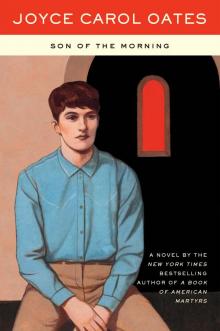 Son of the Morning
Son of the Morning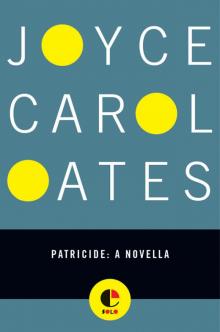 Patricide
Patricide Snake Eyes
Snake Eyes Wonderland
Wonderland In Rough Country: Essays and Reviews
In Rough Country: Essays and Reviews Little Bird of Heaven
Little Bird of Heaven The Haunting
The Haunting The Accursed
The Accursed My Sister, My Love: The Intimate Story of Skyler Rampike
My Sister, My Love: The Intimate Story of Skyler Rampike Dis Mem Ber and Other Stories of Mystery and Suspense
Dis Mem Ber and Other Stories of Mystery and Suspense You Can't Catch Me
You Can't Catch Me Daddy Love: A Novel
Daddy Love: A Novel Broke Heart Blues
Broke Heart Blues I'll Take You There
I'll Take You There Mystery, Inc.
Mystery, Inc. We Were The Mulvaneys
We Were The Mulvaneys The Lost Landscape: A Writer's Coming of Age
The Lost Landscape: A Writer's Coming of Age Evil Eye: Four Novellas of Love Gone Wrong
Evil Eye: Four Novellas of Love Gone Wrong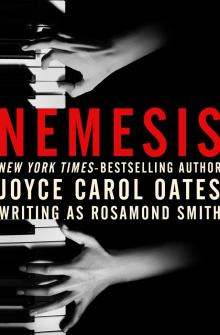 Nemesis
Nemesis Beautiful Days: Stories
Beautiful Days: Stories On Boxing
On Boxing Mudwoman
Mudwoman Hazards of Time Travel
Hazards of Time Travel Night-Gaunts and Other Tales of Suspense
Night-Gaunts and Other Tales of Suspense Mysteries of Winterthurn
Mysteries of Winterthurn New Jersey Noir
New Jersey Noir Sourland
Sourland Blonde
Blonde The Corn Maiden: And Other Nightmares
The Corn Maiden: And Other Nightmares The Oxford Book of American Short Stories
The Oxford Book of American Short Stories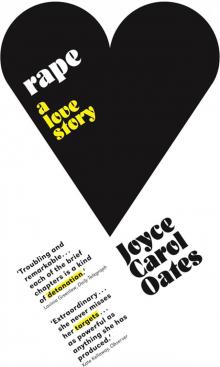 Rape: A Love Story
Rape: A Love Story Lovely, Dark, Deep: Stories
Lovely, Dark, Deep: Stories After the Wreck, I Picked Myself Up, Spread My Wings, and Flew Away
After the Wreck, I Picked Myself Up, Spread My Wings, and Flew Away Freaky Green Eyes
Freaky Green Eyes Night, Neon
Night, Neon I Am No One You Know: And Other Stories
I Am No One You Know: And Other Stories Black Water
Black Water Expensive People
Expensive People The Falls
The Falls Soul/Mate
Soul/Mate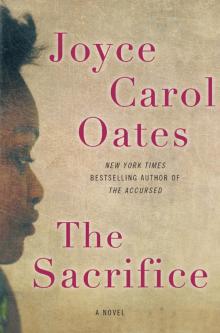 The Sacrifice
The Sacrifice The (Other) You
The (Other) You What I Lived For
What I Lived For Prison Noir
Prison Noir High Crime Area: Tales of Darkness and Dread
High Crime Area: Tales of Darkness and Dread Faithless: Tales of Transgression
Faithless: Tales of Transgression Give Me Your Heart: Tales of Mystery and Suspense
Give Me Your Heart: Tales of Mystery and Suspense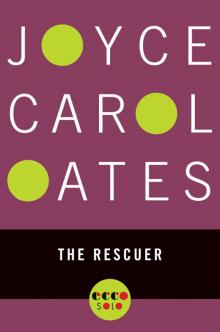 The Rescuer
The Rescuer A Book of American Martyrs
A Book of American Martyrs American Melancholy
American Melancholy Double Delight
Double Delight Big Mouth Ugly Girl
Big Mouth Ugly Girl Bellefleur
Bellefleur Solstice
Solstice Big Mouth & Ugly Girl
Big Mouth & Ugly Girl Evil Eye
Evil Eye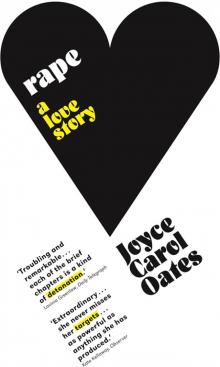 Rape
Rape The Man Without a Shadow
The Man Without a Shadow Missing Mom
Missing Mom My Sister, My Love
My Sister, My Love The Gravedigger's Daughter
The Gravedigger's Daughter Beautiful Days
Beautiful Days The Lost Landscape
The Lost Landscape Daddy Love
Daddy Love Dreams from the Witch House: Female Voices of Lovecraftian Horror
Dreams from the Witch House: Female Voices of Lovecraftian Horror The Tattooed Girl
The Tattooed Girl Give Me Your Heart
Give Me Your Heart In Rough Country
In Rough Country The Journal of Joyce Carol Oates
The Journal of Joyce Carol Oates Black Dahlia & White Rose: Stories
Black Dahlia & White Rose: Stories High Crime Area
High Crime Area Lovely, Dark, Deep
Lovely, Dark, Deep A Widow's Story
A Widow's Story Soul at the White Heat
Soul at the White Heat Wild Nights!
Wild Nights!